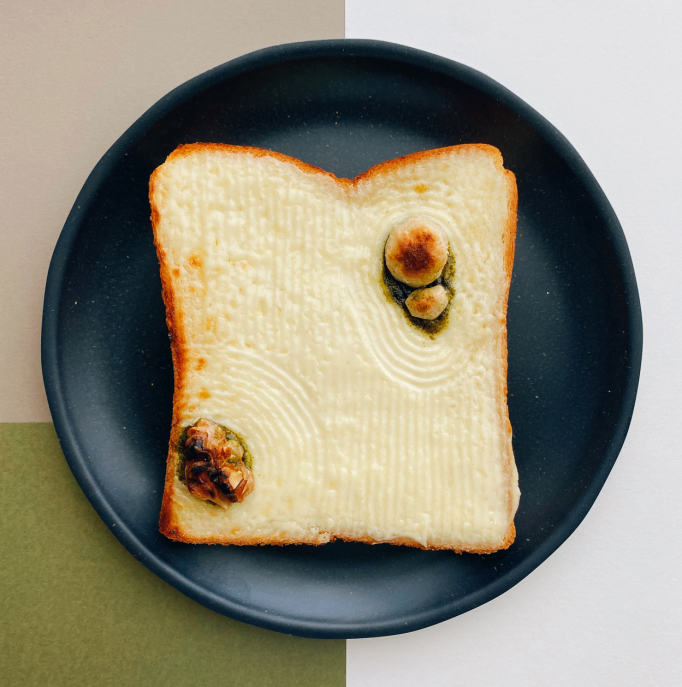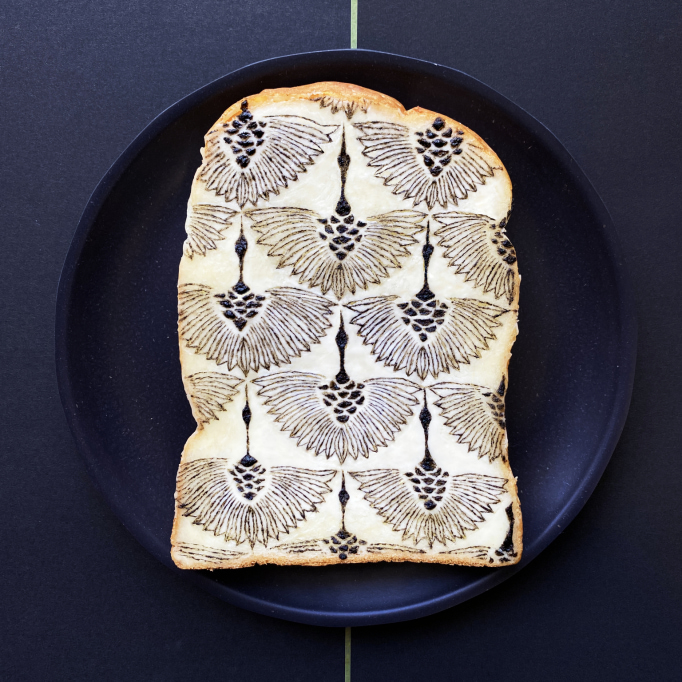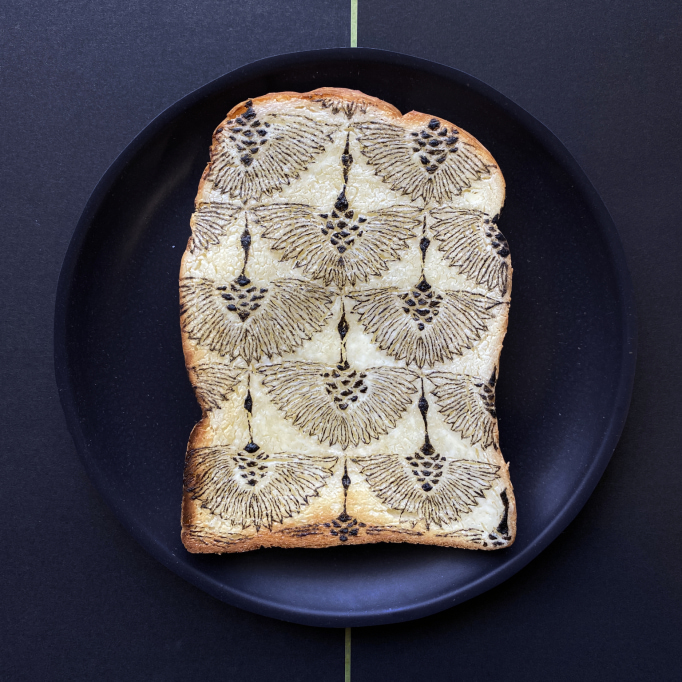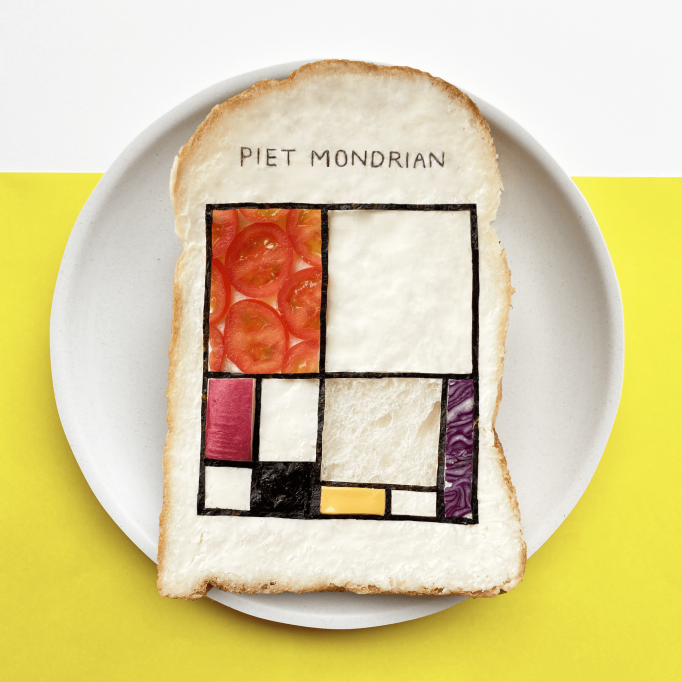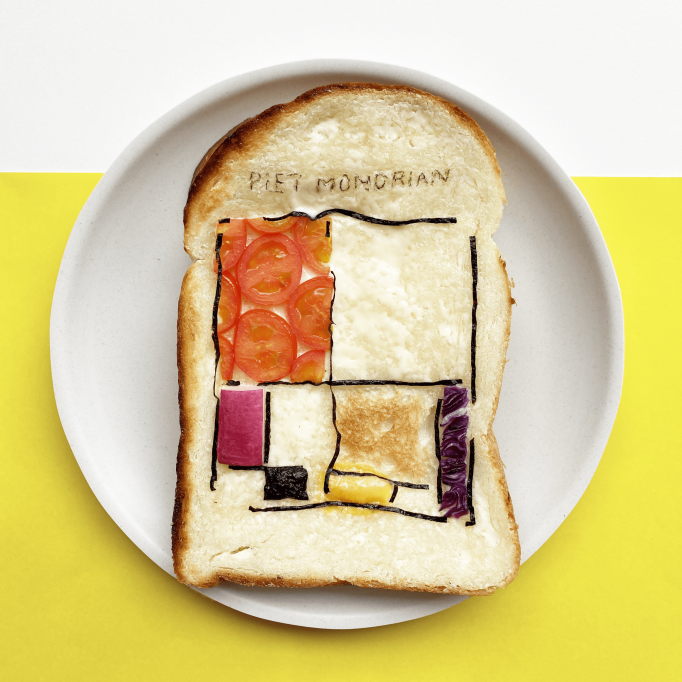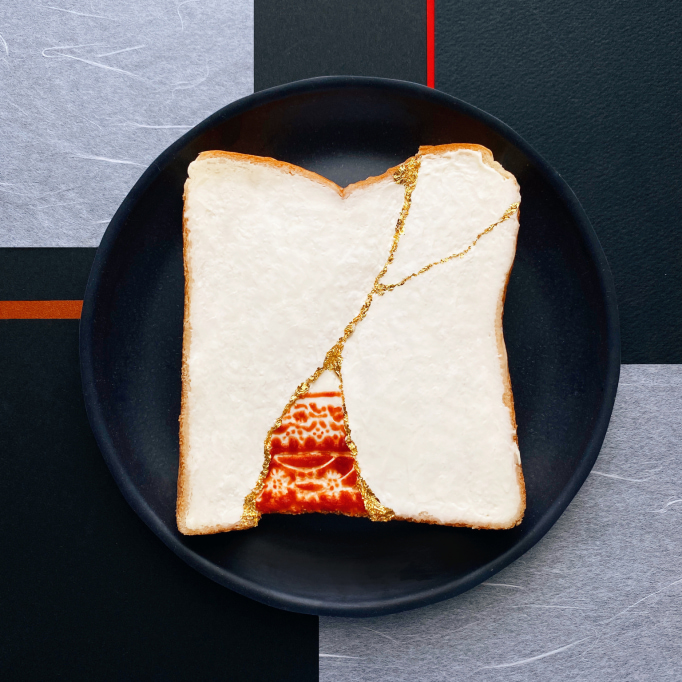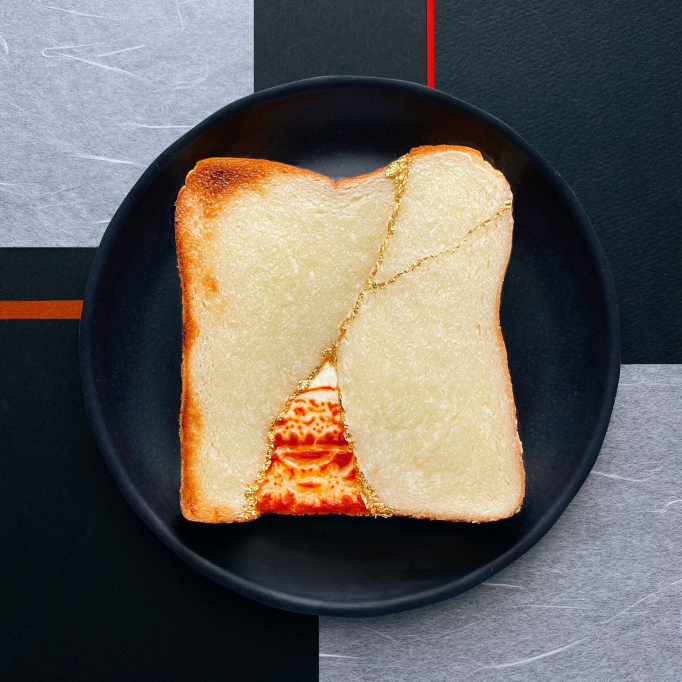A year back, when everyone was sheltering in place and rediscovering their hobbies, Manami Sasaki won the hearts of Instagram with her too-pretty-to-eat toast art. Her second post of a sand Zen garden depiction made just of out of sour cream, macadamia nuts and green tea powder went viral.
1. The world was captivated by your wonderful edible art on toast. But you have been doing art long before that. What did you use to express your creativity before toast?
Before the pandemic, I used to make three-dimensional sculptures, oil paintings, and illustrations, and exhibited them in Tokyo. If you scroll back to the posts before the toast art on my Instagram, you will see some of the artwork I have posted.
Zen garden toast before and after baking
2. You said you started making elaborate designs on your toast to entertain yourself at the start of the current pandemic. What keeps you going after that start? Has the motivation changed or is it the same?
Initially, I wanted to create a creative habit that would make me look forward to getting up early in the morning. During the pandemic, I started working from home, so I used my commute time to make toast art. As I observed the ingredients, I became fascinated by the beauty of the ingredients themselves.
The purpose of my toast art is to make people see the beauty of produce that we usually overlook in our daily lives. Even now, with the spread of corona infection and the difficulty of going out, everyday life is full of beauty and mystery. When you notice that beauty, the world seems to sparkle as if your eyes have changed. So, my mission now is to open that door to aesthetic sensitivity.
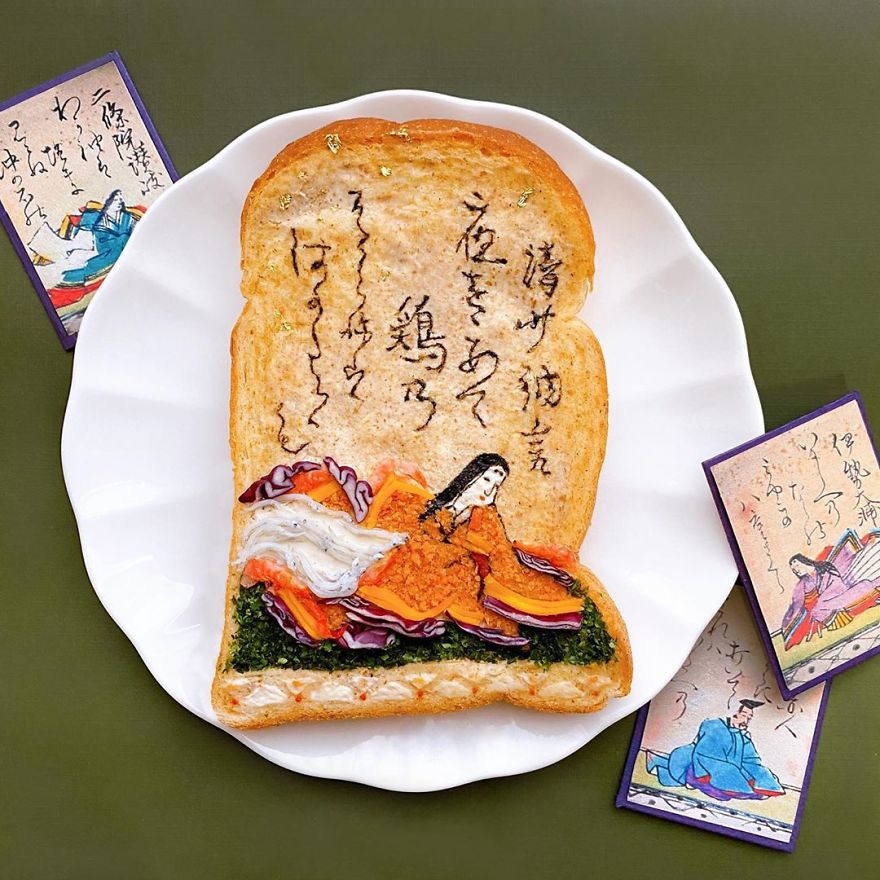
3. What was the first-ever design on toast you made and was it successful right away?
I had this idea and was crazy about making it, and I remember being so impressed with the taste when I ate it. The fact that it tasted good meant that I was able to express the beauty of the ingredients. It was blueberry and chocolate, and it depicted cherry blossoms because I made it right as the sakura season ended. I actually got the idea after taking a morning walk, and the sakura blossoms you see on the photo around the plate are the ones I picked up and put in my pocket during that walk.
View this post on Instagram
4. You say you always consume your artistic toast creations and that they are tasty. Were there any exceptions? Any mistakes, miscalculations, or experiments that went wrong?
I always try to eat the toast just as it is in the picture, without adding any ingredients.
However, there was one toast that was an exception. I made a toast with too much black pepper, so it was too spicy. I ate that toast with cheese on it.
5. You say you either plan a design in advance or get inspired by whatever’s in the fridge. What was the most difficult toast design you made, whether it was planned but difficult to achieve, or unplanned but difficult because of the lack of ingredients?
People often think that my ukiyoe toasts and those with text on them are more detailed and difficult to draw, but in reality, they are not. The most difficult designs are the ones without a set motif, in other words, the ones that are like patterns that are created with my own original aesthetic sensibility. What is important is the thickness, texture and placement of the ingredients. I need to consider how they look, but also the taste balance between all the ingredients used on one toast.
If I decide on a finished product and start making it, I will only end up with something that is within my expectations, so I always start making a design while observing the ingredients. One example is my broccoli shoots toast, where I noticed their gentle color and wanted to showcase it.
View this post on Instagram
6. You draw thin lines and text on your toast. What do you use for those most intricate details?
I use a sewing needle for the thin lines made with paste. When using seaweed, I use scissors with a thin tip.
7. What ingredients do you find yourself using the most, and what ingredients do you use the least? Why is that?
I often use sour cream for the base, and squid ink, which I like the taste of. Very few people use squid ink on toast, so people around me are surprised. The first time I used squid ink in this way, it tasted really good, like tasting the ocean, so I use it a lot now. Also, I take the initiative to use seasonal ingredients throughout the year.
Crane motif made with squid ink on top of a sour cream spread.
8. What’s your favorite food, aside from toast?
I love traditional Japanese food because I like to enjoy the original flavor of the ingredients. As simple as that.
9. Your toasts went viral in 2020 and your followers count skyrocketed. What did that bring to you? How did that change your life?
I’m very happy that I am now able to interact with people from all over the world. I love traveling abroad. I have visited museums, volunteered, gone to the desert, and observed traditional cultures. However, due to the spread of the corona infection, I can no longer go abroad. In such a situation, being able to communicate with people overseas through social networking sites soothes my heart.
I honestly don’t care how many followers I have. Even if I have zero followers, I will not stop making toast art. My purpose in life is to create what I consider to be “works that reflect my values”. As an artist, I am more than happy if people feel something when they see my work.
10. What is next for you? Any new projects on the horizon, or goals and dreams you’d like to share with us?
My immediate goals are to create a visual book, organize a toast-making event with many people, and open a limited-time restaurant serving beautiful and tasty toast.
Follow Manami Sasaki on Instagram for more toast and other upcoming projects.
All photos in this article are courtesy of Manami Sasaki.


